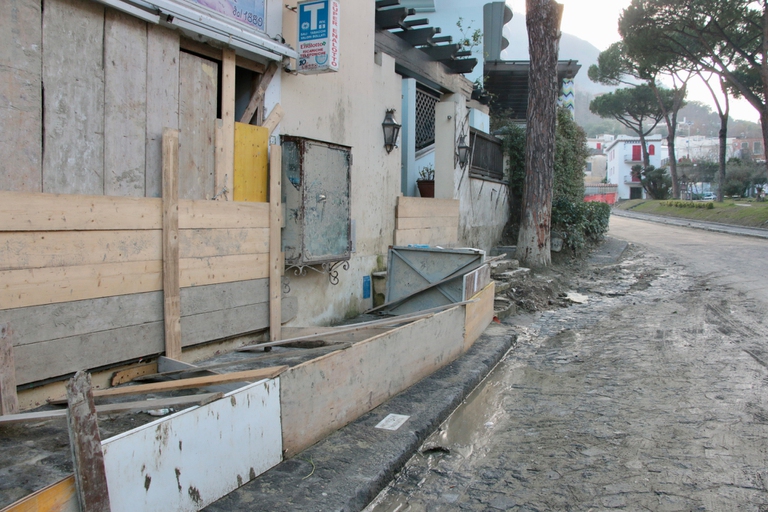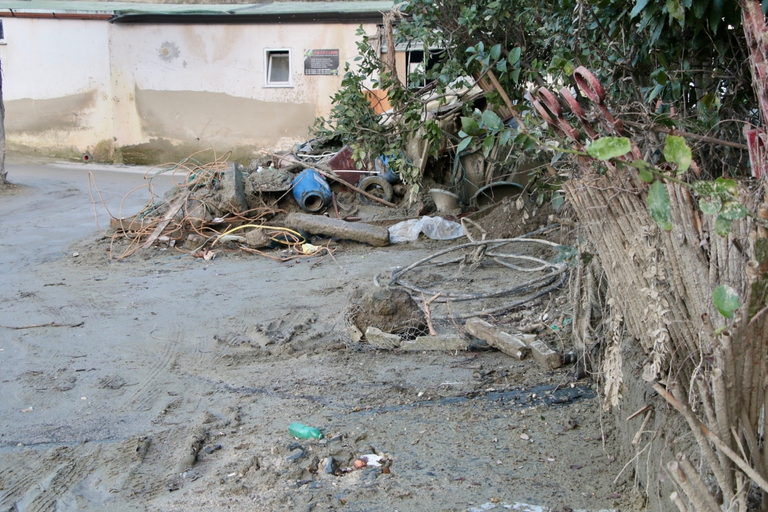
Not much snow, peaks of 19 degrees Celsius in Norway and even 28 degrees in France: official data confirms the anomalously high temperatures of this past winter.
After a landslide led to twelve deaths on the island of Ischia, questions have been raised about the impacts of illegal building, tourism, and climate change.
The landslide that hit Ischia in the night between November 25th and 26th 2022 raised questions about hydrogeological risk and its management, illegal construction, and misuse of funds. But there is even more at play. Climate change and its impact on densely populated coastal areas and the impact of touristification on local populations are also factors that played a role in the intricate context of this event.
Ischia, an island located near Naples off the coast of Southern Italy, was hit by heavy rainfall in the night between November 25th and 26th, 2022. The rain caused flooding and at dawn, a landslide hit an area called “Celalrio” in one of the island’s six towns, Casamicciola Terme. The landslide caused devastation in the area. Twelve people lost their lives, four others were injured, and hundreds of people were displaced. The landslide also damaged both private homes and businesses.
The risk of such events occurring in much of Italy is well-documented. The Italian public research institute ISPRA published a report in 2021 highlighting that 93.9% of Italian municipalities are at risk of landslides, floods, and coastal erosion. This number means that in Italy, 1.3 million people are at risk of being exposed to landslides, while 6.8 million people are at risk of flooding. The island of Ischia faces significant hydrogeological risk, as 49% of the its area is classified as at high risk of landslides.
Climate change influences and exacerbates hydrogeological risk, increasing the likelihood or severity of extreme weather. According to a report elaborated by Legambiente’s Cittàclima Observatory, in Italy in 2022, there was an increase in extreme weather-hydrogeological events amounting to 55% compared to the previous year.
When the hydrogeological risk in an area is high, carrying out maintenance work along the paths that surface runoff takes is vital to guarantee the safety of local residents. That’s because surface runoff tends to flow downhill from high areas to the lowest elevation it can reach and then into bodies of water, and if it meets obstacles along the way, these can modify its path.
The presence of obstructions on this surface runoff path in the area hit by the landslide was noted by both authorities and locals, including Casamicciola’s former mayor Giuseppe Conte who shared his concern in emails sent to several local and regional authorities, emails that went unanswered.
Following the event, questions have been raised about the phenomenon of illegal building, its frequency in Ischia, and its potential impact on the landslide. A specific figure in particular has been cited with regard to illegal building happening on the island: the 28.000 building amnesty requests submitted by people residing on the island, whose entire population amounts to 60.000. Such requests, however, are submitted not just for brand-new buildings but also for smaller building works, like the addition of a window.
The practice of illegal building is present and well-known on the island. We can find its roots in the area’s high population density, and in touristification’s staggering impact on the island. In Ischia, part of a region with one of the highest unemployment rates in Europe, the effects of mass tourism on the housing market have had tangible consequences. As many private homes have been converted into small lodging establishments to cater to the hundreds of thousands of tourists visiting the small island every year, the availability of houses to rent has decreased.
In addition, mass tourism has also caused rent inflation, with rents higher than many locals can afford. This housing crisis isn’t happening only on this Italian island, as locals in many other tourist locations across Europe feel the effects of tourism activity on their ability to afford housing.
Following the event, the Naples Public prosecutor’s office has filed a case against unknown persons for culpable disaster. On 9th December 2022, even more residents had to evacuate their homes after a severe weather warning was issued by the Region’s Protezione Civile, the body that deals with the management of emergency events in the area.
In case of other emergencies of this kind, the city hall will warn the local population of Casamicciola of the imminent danger by an alert system that will make their mobile phones ring. On January 3rd 2023, the Tuscan company Geologica Toscana was appointed to draft Casamicciola’s municipal emergency plan (PEC), aimed at dealing with emergencies through the creation of a coordinated system of actions and cooperating bodies. The residents displaced by the landslide still temporarily reside in a local hotel.
Siamo anche su WhatsApp. Segui il canale ufficiale LifeGate per restare aggiornata, aggiornato sulle ultime notizie e sulle nostre attività.
![]()
Quest'opera è distribuita con Licenza Creative Commons Attribuzione - Non commerciale - Non opere derivate 4.0 Internazionale.
Not much snow, peaks of 19 degrees Celsius in Norway and even 28 degrees in France: official data confirms the anomalously high temperatures of this past winter.
Ocean warming has risen to record highs over the last five years: just in 2019 the heat released into the world’s oceans was equivalent to that of 5-6 atomic bombs per second. The culprit, no doubt, is climate change.
What did Greta Thunberg tell participants at the 2020 World Economic Forum in Davos? Once again, the Swedish activist underlined the total lack of concrete solutions to the climate crisis presented by leaders so far.
The list of human and animal victims of the Australia wildfires keeps growing – one species might already have gone extinct – as the smoke even reaches South America.
Kivalina is located on a small island once guarded by sea ice, which is now melting due to global warming. While the sea threatens to wipe the village off the face of the Earth, its inhabitants refuse to give up their lives and traditions.
Thanks to activists, the voice of the world’s peoples resounded through the COP25 like an alarm bell. Governments didn’t reach the results they demanded, but their cries and messages were stronger than ever, reaching even those who weren’t in Madrid.
Climate change poses a risk for millions. However, women are the most vulnerable to its negative consequences: a few simple considerations by the Italian Climate Network help us perceive the global implications of this.
The COP25 ended two days late and with very few steps ahead made. Climate negotiations in 2020 will be an uphill battle as political will clearly seems to be lacking, once again.
What does it mean to live in the “climate moment”? How did we get here? Is it too late to change? Naomi Klein, Alexandria Villaseñor, Joëlle Zask and Bill McKibben discuss these vital questions at the Albertine Festival in New York City.











